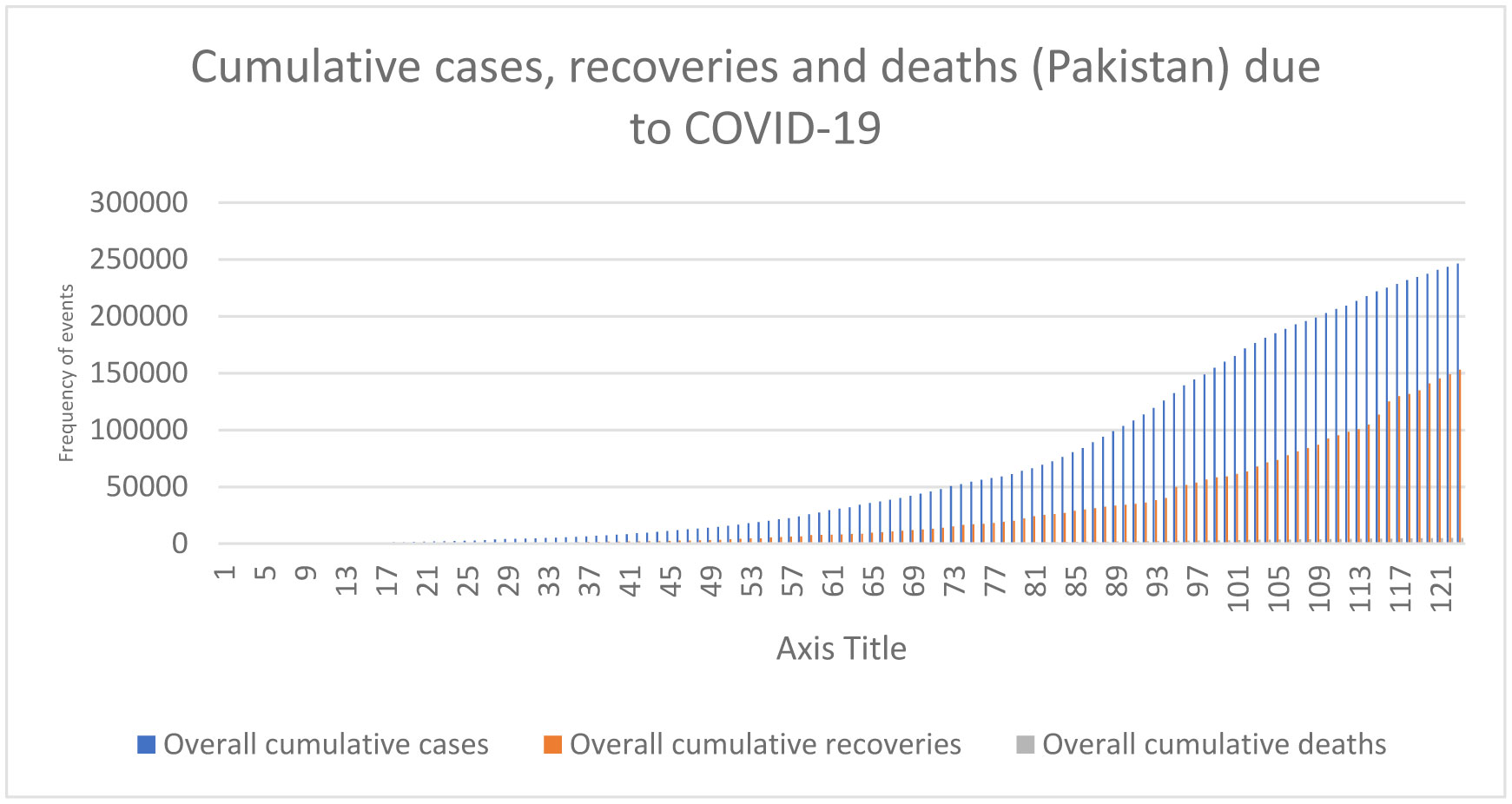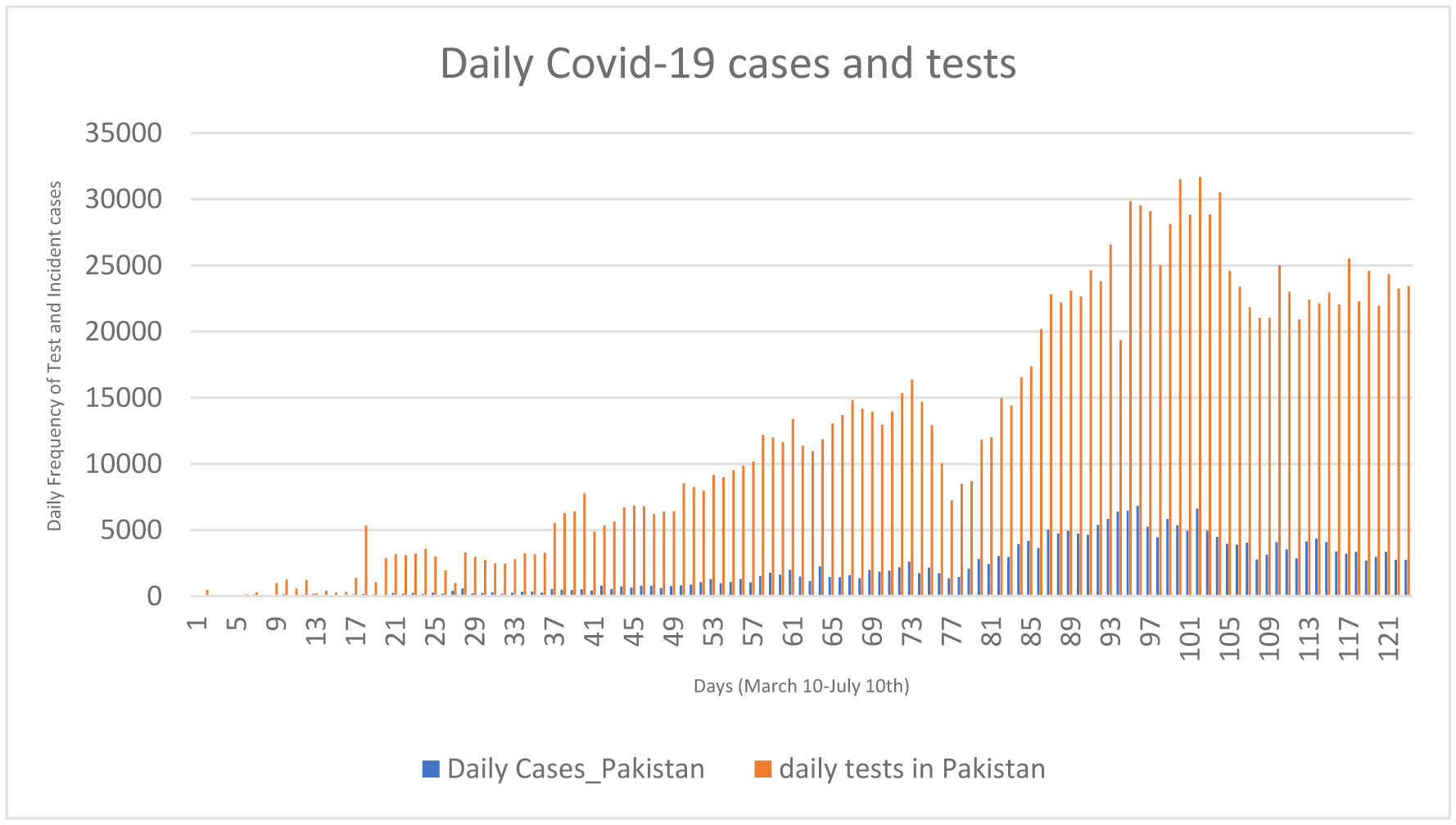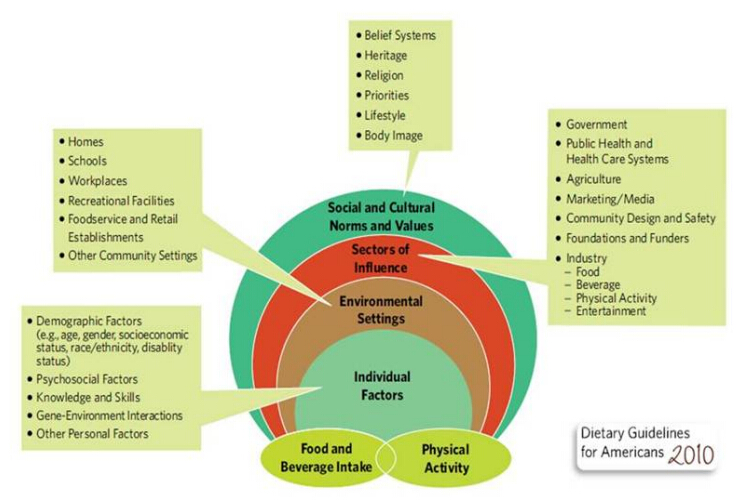This review article discusses the Dietary Guidelines for Americans (DGA) in support of a total diet approach to achieving diet and health goals, especially as they relate to the obesity epidemic. However, some scientists and organizations have identified one food, food group, or nutrient as the cause of the obesity epidemic and recommend that simply reducing that food/food group/nutrient will solve the problem. This is simplistic and unlikely to be effective in long term management of the obesity problem. This article also acknowledges discrepancies in the literature and the lack of consensus opinions from systematic reviews. Failure to consider the evidence as a whole can lead to inaccurate reports which may, in turn, adversely influence clinical practice, public policy, and future research. This article also considers where the line should be drawn between individual choice and responsibility and public regulation. Using sugar sweetened beverages as an example, the article considers the lack of a consistent association between added sugars and weight in the literature and calls for policy recommendations that are based on science and emphasizes the need for evidence-based policies rather than policy-based evidence.
1.
Introduction
COVID-19 is a novel corona virus which is currently treated as severe pneumonia [1] and reportedly has a very high human-to-human transmission risk [2],[3]. COVID-19 was declared a Public Health Emergency of International Concern (PHEIC) in January 2020 [4] and in March 2020, the World Health Organization (WHO) declared COVID-19 a pandemic and since it has affected 213 countries and two international conveyances [5]–[7]. In Pakistan, the Ministry of Health and government of Pakistan confirmed the first case of COVID-19 on February 26, 2020 in Karachi, the capital of the province of Sindh [8]. The early cases of COVID-19 were reported in pilgrims returning from Iran, Iraq, and Syria who were crossing the bordering city Taftan, Balochistan, and reportedly then travelling to other cities, mainly to Karachi and Gilgit-Baltistan. Within a few weeks time, the numbers of COVID-19 cases soared rapidly; affecting every province and territory in Pakistan. Although initially COVID-19 was mainly reported in travellers, with time there was an increase in community transmission. To deal with the pandemic, and following the international protocol [9], the federal government-imposed lockdowns, travel restrictions, and a ban on mass public gatherings to control the spread of COVID-19.
In Pakistan, a common public believe is that the transmission of COVID-19 will decrease with the rise in temperature during the summer season [10]. Human-to-human contact is key in the transmission of viral illnesses such as influenza, however environmental factors such as humidity, temperature [11],[12], wind [13], and sun exposure [14] play an important role in disease transmission. In other corona viruses such as Middle East Respiratory Syndrome (MERS) [15]–[17] and severe acute respiratory syndrome (SARS) [18],[19], climatic factors are known to affect viral transmission. Climatic factors such as temperature [20] and humidity [21] affects factors such as viral viability and persistence [12], as well as people's behavior and decisions—such as meeting for social gatherings [22]. As compared to the better-known corona viruses, COVID-19 is a novel infection and an exact comparison to transmission and mortality is not available. Comparisons are difficult, potentially due to the differences in transmission such as the rapid spread that created limitations in hospital resources that stretched hospitals beyond their capabilities [23]. Although many symptoms of COVID-19 are the same as the seasonal flu, COVID-19 is different than the common flu in terms of the incubation period, transmission, effects on age groups, and risk factors associated with COVID-19 [24].
With the continuous increase in the number of COVID-19 cases and speculations about the second wave throughout the world, there is need for a high level of action, proper, and thoughtful planning, and management [25]. It will be important to explore the transmissibility of COVID-19 and any association with climatic factors that affect daily incidence, mortality, and recovery rate [26]. As Pakistan does not have uniform weather throughout all provinces and territories, having an understanding about the transmission of COVID-19 during natural environment and climatic changes will be helpful to support decision-making related to disease control. The goal of this article was to explore whether climatic factors such as humidity, wind, temperature, and sun exposure influence the transmission of COVID-19.
2.
Methods
To conduct this analysis, data was collected from various websites and online sources as reported in previous studies [15],[16],[25],[27],[28], thus ethical approval was not needed. No web scrapping software or programs were used, and data was not altered in any regards. Data was compared to multiple other sources to confirm authenticity.
Population data: COVID-19 cases, deaths, recovery and daily testing for each province and, Islamabad, as well as Gilgit-Baltistan and Azad Kashmir were collected online [29]–[31] from March 10 to July 10th, 2020.
Weather data: Weather data [31]–[34] consisted of daily mean humidity and wind, daily maximum and minimum temperature and sun status. Reports of “broken clouds” and “partly sunny” were merged with “cloudy days”, and “scattered clouds” were merged with “sunny days”.
Statistical analysis: Descriptively we reported the cumulative incidence data, deaths, and daily recovery for each province and territory. Continuous variable such as wind (KM/H), humidity (%) and temperature (°C) were reported with mean and standard deviation (SD); whereas categorical data such as daily tests, sunny days, lock down status were reported with numbers and proportions.
Data was analyzed with a log link of negative binomial distribution using the generalized linear mixed model [35],[36]. We chose to use a negative binominal regression model as it is more suitable for count data [36]. The model of fit was determined with the likelihood ratio [37] and the outcome for each territory was reported separately. Besides weather data, the analysis was also adjusted for other variables such as lock down status (lock down vs. smart lock down vs. no lock down) and maximum daily testing status (≥10,000 vs. <10,000). In March-May of 2020 there were few nationwide events that required mass gatherings during which standard operating procedures (SOP) were potentially compromised. The nationwide events included religious events that required mass gatherings, Ramadan (iftar parties), and Eid days. As the incubation period for COVID-19 is 3 to 14 days, we included the following 14 days as a continuation for each nationwide event. First, we analyzed the association of climatic factors, lock down status, maximum daily testing with outcomes variable in univarable analysis. All variables were included in the final analysis for COVID-19 incidence, but the analyses for daily deaths and recovery were not adjusted for lock down status, number of daily testing, and nationwide social events. As humidity correlates with temperature, the interaction between humidity and temperature [11] was included in our secondary analysis. The effect estimates were reported with odds ratio (OR) and 95% confidence intervals (CIs) and statistical analyses were conducted using SPSS v.25. statistical software.
3.
Results
A summary of cumulative COVID-19 cases, deaths, and recoveries are reported in Table 1. As of July 10th, 2020, there were 246,351 confirmed cases of COVID-19—5,123 (2.07%) patients died and 153,134 (62.16%) recovered. Sindh was the most affected province in the country, with a confirmed 102,368 (41.55%) cases, whereas Azad Kashmir region (AZK) had the lowest cumulative cases of COVID-19 (0.62%). Daily mortality rate was highest in Khyber Pakhtunkhwa (KPK) (3.60%) followed by AZK (2.74%). Most recoveries occurred in Gilgit Baltistan (79.93%) followed by Islamabad (74.00%). Figure 1 shows cumulative COVID-19 cases, death, and recoveries. Figure 2 shows the reported daily cases and tests conducted in Pakistan as well as the number of daily COVID-19 cases corresponding with the number of daily tests and trends in daily cases over 123 days. The peaks in daily cases corresponded with the 3–14 day incubation period and were associated with nationwide events and the loosening of lock down restrictions.
The association of various factors with daily COVID-19 cases, deaths, and recovery are reported in Tables 2, 3, and 4. In univariable analysis, humidity was associated with a lower incidence of COVID-19; whereas temperature, lock down status, and number of daily tests were associated with higher daily incidence rate. Humidity was also associated with a decrease in death and recovery rates, whereas temperature was associated with higher death and recovery rates.
Results of adjusted analysis: Results of the adjusted analysis for daily new cases, deaths, and recoveries are reported in Table 2, 3 and 4, respectively. In multivariable analysis, except >10,000 tests per day, no other variable was consistently associated with an increase in the number of daily cases (Table 2). With more than 10,000 tests per day, the effect estimates (OR) ranged from 2.173 to 9.963. In multivariable analysis, none of the climatic factors were associated with daily COVID-19 incidence. Daily temperature showed a non-significant trend towards higher daily incidence which became more obvious with reports of daily low temperatures, although low temperatures showed a trend towards higher COVID-19 incidence. Similarly, nationwide events showed non-significant but consistent trends towards increased incidence of infection. Lock down status was not associated with daily incidence rate but mostly showed trend towards high daily incidence rate.
In multivariable analysis, no variable was consistently associated with daily death rates or daily recoveries through all regions (Table 3 and 4). Daily low temperatures showed a trend towards higher recovery rate. The analysis of interaction between temperature and humidity was not significant for all three outcomes.
4.
Discussion
Our goal was to explore the association of four important environmental factors; wind, humidity, temperature, and daily sun exposure with respect to the transmission of COVID-19. We adjusted our analysis for other important variables such as lock down status, nation wide social events, and daily testing for the COVID-19. The multivariable analysis showed trends for higher odds and increased COVID-19 incidence with low daily temperature. However, high temperature was not significantly associated with the daily COVID-19 incidence. The multivariable analysis showed that the number of daily tests performed was the only factor significantly associated with increased daily incidence of COVID-19. Contrary to common belief, climatic factors—particularly temperature and humidity, did not have consistent association with daily COVID-19 cases. Nationwide social events and lock down status mostly showed a non-significant trend towards increased COVID-19 daily incidences. In the multivariable analysis, no factor showed a consistent association with daily deaths or recoveries throughout all regions. For daily recoveries, daily low temperatures showed a trend towards higher recovery rate.
5.
Conclusion
To the best of our knowledge, this is the first study to investigate the association between environmental factors, daily tests, nation wide events and lock down status with daily COVID-19 incidence, recoveries, and death dues to COVID-19 in Pakistan. Our study did not show an association between the environmental factors and daily COVID-19 cases, deaths, and recoveries and thus the speculations that the COVID-19 will decrease with warm temperature was not supported. A recent report suggested that weather may alter COVID-19 transmission but may not completely eliminate it [43],[54]. Due to social beliefs among the Pakistani nation, national and local governments need to take rigorous measures to educate people about the importance of social distancing as it remains our strongest method of prevention [42]. Stronger strategies and resources at the national and local levels of government are needed to increase daily testing for COVID-19.More research is needed to explore the true effect of environmental factors such as wind, temperature, humidity, and sun exposure while adjusting for other important factors such as age, gender, socioeconomic factors, underlying comorbidities with daily risks of COVID-19 spread, mortality and recovery, and therefore having more testing, and thus more data, is critical to understanding the true effects and patterns of the virus.
Strengths and limitations
The key strengths of this study were firstly, the analysis was adjusted for other key variables such as lock down status, number of daily testing, and nationwide mass social gatherings. Secondly, we explored the effect of various climatic factors on different outcomes, which makes the interpretation broad. Thirdly, data was collected on daily basis rather than on a weekly or monthly basis. Limitations of our study are due to the nature of the data utilized, we could not adjust for socioeconomic status, gender, air pollutants and comorbidities. As well, data was collected mainly from publicly available websites compared to data used in a population-based study design, however the data was collected through authentic websites and was compared with multiple sources for accuracy.
Relevance to literature and current trends of COVID-19
In Pakistan, temperatures did not show significant association with the COVID-19 daily incidence. However, a trend for increased incidence of COVID-19 was noted with lower temperatures. Similarly, inconsistent association of temperature with the COVID-19 incidence was also reported [38] in Hubei, China, where temperature showed a significant reduction in COVID-19 cases, but similar associations with temperature were not reported in other parts of China.39 Our results differed from previous studies [31],[39]–[41] that showed significant association of environmental factors such as temperature, wind, humidity with incidences of COVID-19 deaths and recoveries. One potential explanation for the variation between our results and the previous studies could be due to differences in the analysis plan. Previous studies [31],[39]–[41] analyzed the association between environmental factors and COVID-19 incidence with correlation analysis. We measured association between environmental factors and COVID-19 incidence, death rates and recoveries using regression. Regression is a more suitable analysis method than correlation when predictive association of a variable is desired with the outcome and allows adjusting for other variables that can potentially affect the outcome [42]. Zhu [43] analyzed data using generalized additive method (GAM) and piecewise linear regression to determine the association between COVID-19 incidence and environmental factors. Zhu [43] did not report significant association of temperature with COVID-19 incidence, which concur with our results. Our findings also support the current international trend of COVID-19. On June 8th, 2020 New Zealand declared the nation free from COVID-19 and lifted all restrictions [44]. June is winter in New Zealand with an average temperature of 11.5°C, ranging from 15°C during the day to 8°C at night [45]. If the temperature had influenced COVID-19 spread, then it should not have experienced dramatic reductions in reported COVID-19 cases. New Zealand initially imposed very strict lock down measures and surveillance for COVID-19 that were considered effective in reducing the transmission of COVID-19, but as New Zealand loosened the restrictions new cases of COVID-19 began to emerge [46],[47]. Also, in countries such as India and Brazil with more moderate-to-warm climate, high temperatures did not show effects on reported daily COVID-19 cases [48],[49]. In a lab study by Chin et al [50], the COVID-19 virus became inactive after 30 minutes at 56°C and 5 minutes at 70°C. If temperature has association with COVID-19 transmission, such high environmental temperatures are not likely in day-to-day life. The only finding that consistently showed significant association with daily COVID-19 incidence was increased daily testing. This also aligns with international trends found in countries with higher reported COVID-19 cases like the United States of America, where they have had the resources to perform more testing.
Clinical implications
In multivariable analyses, only daily testing was associated with higher odds of daily COVID-19 incidence. In most regions, lock down status showed trend for lower odds of COVID-19 incidence and although non-significant, nationwide mass gatherings did show consistent trends towards high incidence. As compared to New Zealand and China, lock down status in Pakistan was not significantly associated with COVID-19 incidence. One possible explanation for the lack of association with lock down status could be due to the majority of the Pakistani nation's social beliefs, potentially people did not follow lock down restriction and SOP strictly [51],[52]. This pattern shows that social distancing remains a vital prevention strategy. COVID-19 is the third major corona virus outbreak after SARS and MERS, both which showed some variation with weather, but it was precautionary measures such as the policies adopted at the international, national, and public level that proved effective in controlling the major outbreaks of these viruses [53].










 DownLoad:
DownLoad:






